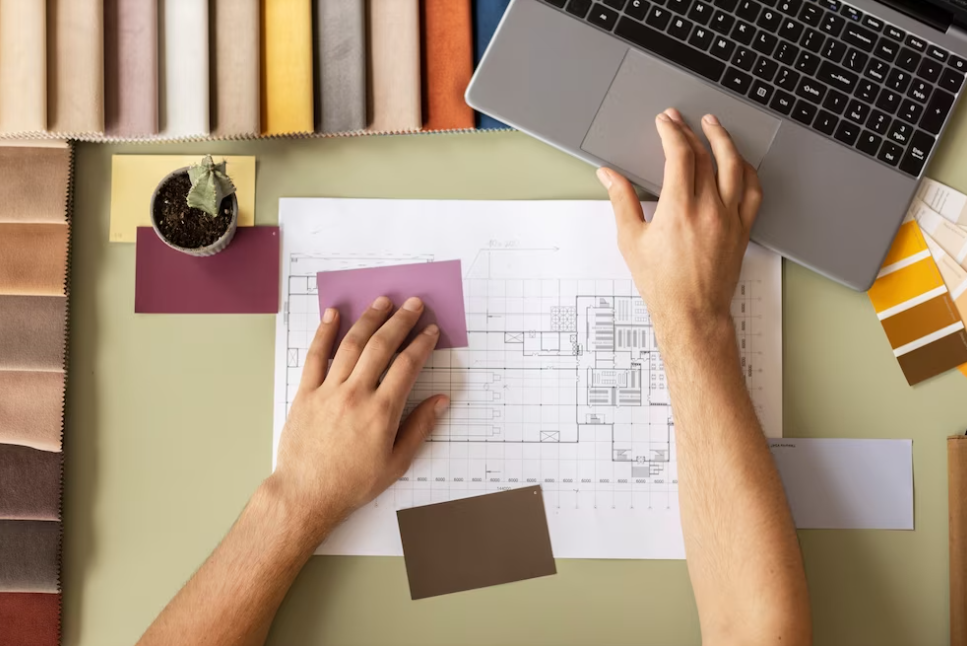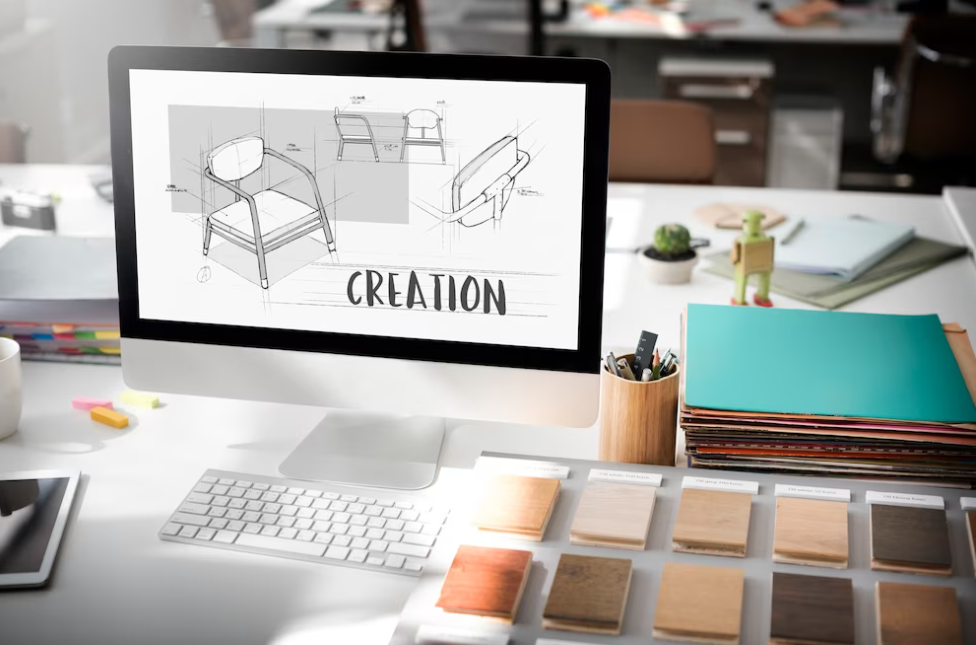Get ready to delve into the captivating world where graphic design intersects with architecture and interior design! This enthralling journey will showcase the dynamic relationship between these fields.
Graphic design holds immense power in elevating the aesthetics and functionality of buildings and interior spaces. Its ability to communicate design concepts effectively to clients, stakeholders, and users is invaluable. From creating stunning visual representations of structures to crafting compelling branding and marketing materials for interior design firms, graphic design emerges as an indispensable component in both industries. Prepare to be amazed by the wonders this collaboration brings forth!
Graphic Design in Architecture and Interior Design
In the realms of architecture and interior design, graphic design exerts a profound impact, serving a myriad of essential purposes. Its applications span from crafting captivating visual representations of buildings to curating branding and marketing materials. Additionally, graphic design is instrumental in devising efficient wayfinding systems and enriching the overall user experience. From the smallest logo to intricate 3D visualizations, this dynamic discipline plays a pivotal role in communicating design concepts and showcasing the distinctive identity of both buildings and interiors.
For architects and interior designers alike, harnessing the power of graphic design offers the opportunity to elevate projects and allure prospective clients. By integrating this versatile tool, design professionals can breathe life into their creations and leave a lasting impression on those who experience their work.
The Role of Graphic Design in Architecture and Interior Design
Graphic design in architecture
Graphic design plays a crucial role in architecture, serving various purposes. Among these, one of the most essential functions is to craft visual depictions of buildings. By utilizing drawings, diagrams, and models, graphic designers breathe life into the fundamental features and concepts of a building’s design. This becomes particularly significant during the initial phases of the design process, as it enables clients and stakeholders to envision the eventual outcome with clarity.
- Serves another vital function, which involves crafting logos and branding for architecture companies. The logo and branding of a building are essential elements that symbolize its identity and mission. With the expertise of graphic designers, a distinct and memorable logo and branding can be created, enabling a building to distinguish itself in a competitive market;
- Possess the ability to develop compelling marketing materials that effectively showcase a building’s distinctive features and advantages. These materials may encompass brochures, flyers, and other promotional items, accentuating the agency’s unique selling points;
- Play a significant role in designing signage and wayfinding systems within buildings, thereby enhancing the overall user experience. Through the creation of clear and concise signage, as well as intuitive wayfinding systems, they facilitate smooth navigation for individuals, allowing them to comprehend the building’s layout with ease.
Lastly, graphic designers have the capability to produce 3D visualizations and renderings of buildings, which serve as invaluable tools for helping clients and stakeholders envision the ultimate outcome. These visualizations play a crucial role in effectively communicating design concepts and highlighting key features to clients and stakeholders. They provide a realistic and immersive glimpse into the future building, fostering a deeper understanding and appreciation of the design vision.

Graphic design in interior design
Graphic design assumes a significant role in interior design, showcasing its versatility through various applications. One vital aspect involves creating branding and marketing materials for interior design firms. With a strong brand identity and compelling marketing collateral, graphic designers enable these firms to stand out, attract new clients, and make a lasting impact.
- Graphic designers are adept at designing logos and branding for individual interior design projects. These tailored logos and branding materials capture the essence of each project’s unique style and vision. Their usage across multiple platforms, including business cards, letterheads, and promotional materials, further reinforces the project’s distinct identity and enhances its visual appeal;
- Another pivotal function of graphic design in interior design involves crafting captivating visual presentations of design concepts. By using mood boards, 3D visualizations, and other materials, graphic designers effectively communicate design ideas, allowing clients and stakeholders to envision the final product with clarity and enthusiasm;
- Graphic designers excel in developing wayfinding systems and signage within interiors, contributing to an improved user experience. This becomes especially critical in public spaces like hospitals and museums, where clear directions and guidance facilitate seamless navigation.
Furthermore, graphic designers bring their expertise to design product packaging and labels for interior design products, ensuring alignment with the product’s design and aesthetic. By creating unique and visually appealing packaging and labels, graphic designers elevate the product’s presence in a competitive market, capturing attention and leaving a lasting impression on potential customers.

Inspiring Graphic Design in Architecture and Interior Design
Explore some remarkable examples of graphic design in architecture and interior design:
- Case Studies of Buildings with Strong Graphic Design Elements: The London Olympic Stadium, the Sydney Opera House, and the Seattle Public Library stand as prime instances of buildings that skillfully integrate powerful graphic design elements;
- Branding and Marketing Materials in Architecture and Interior Design: Draw inspiration from renowned firms like BIG, Herzog & de Meuron, and Gensler as you examine their branding and marketing materials;
- Showcasing Visual Presentations of Design Concepts: Behance and Dribbble offer a treasure trove of stunning visual presentations for architecture and interior design projects;
- Successful Wayfinding Systems and Signage in Architecture and Interior Design: Take cues from exemplary wayfinding systems and signage at places like the Munich Airport, the British Museum, and the New York Times Building.
Conclusion
Graphic design plays a crucial role in both architecture and interior design. It goes beyond merely creating visual representations of buildings; it extends to developing branding and marketing materials that elevate the aesthetics and functionality of spaces. Whether you’re an architect or an interior designer, harnessing the power of graphic design is essential to the success of your projects. At Toriabrands, we stand ready to assist you with all your visual design requirements. So, ensure you make the most of graphic design to transform your architectural and interior design endeavors into remarkable achievements. Count on us for any design assistance you may need.
FAQ
Yes, graphic design plays a significant role in interior design. It is utilized to create effective wayfinding systems, design product packaging and labels, and develop branding and marketing materials that enhance both the aesthetics and functionality of interior spaces. Moreover, graphic design is vital in communicating design concepts and crafting a unique identity for the interiors.
In architecture, graphic design serves multiple purposes. It is employed to create visual representations of buildings, develop branding and marketing materials, design efficient wayfinding systems, and enhance the overall user experience. By harnessing graphic design, architects can effectively communicate their design concepts and establish a distinctive identity for their buildings. Logos, 3D visualizations, and various other graphic design elements play a crucial role in attracting clients and elevating architectural projects.
Yes, graphic design is an indispensable tool in architecture. It plays a crucial role in creating visual representations of buildings, developing branding and marketing materials, designing efficient wayfinding systems, and enhancing the overall user experience. Through graphic design, architects can effectively communicate their design concepts and showcase the unique identity of their buildings. Elements like logos and 3D visualizations are essential tools that help architects attract clients and elevate their projects.
Yes, graphic design is essential for architects. It serves as a valuable tool for creating visual representations of buildings, developing branding and marketing materials, designing efficient wayfinding systems, and enhancing the user experience. By leveraging graphic design effectively, architects can communicate their design concepts with clarity and highlight the distinct identity of their buildings. Incorporating elements such as logos and 3D visualizations can significantly help architects attract clients and elevate the success of their projects.





